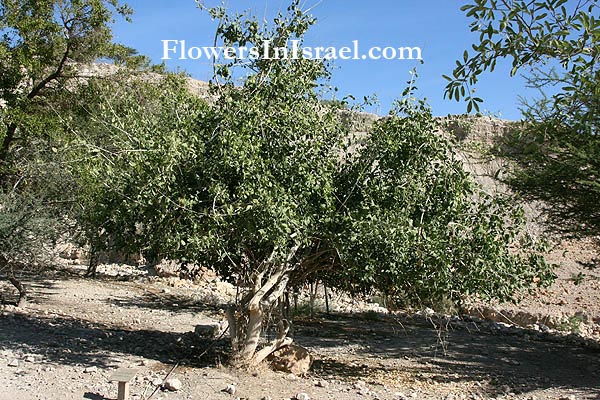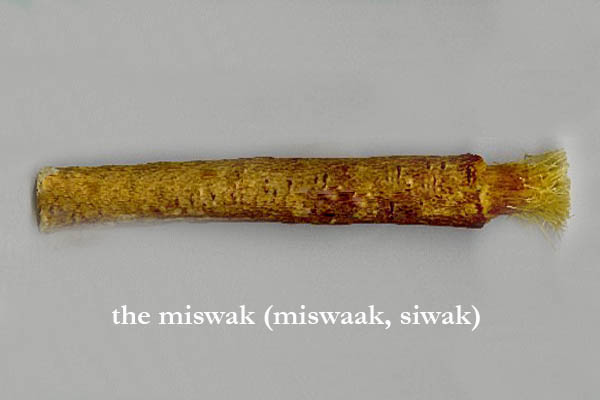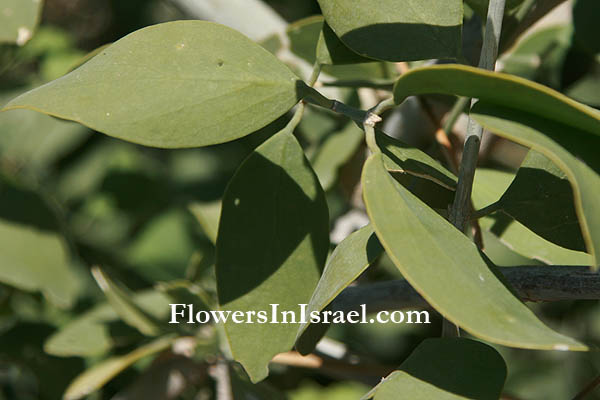Arak tree, Peelu tree,
Hebrew: סלוודורה פרסית, Arabic: الأراك
| Scientific name: | Salvadora persica L. | |
| Common name: | Toothbrush tree, Mustard tree, Arak tree, Peelu tree | |
| Hebrew name: | סלוודורה פרסית | |
| Arabic name: | الأراك | |
| Family: | Salvadoraceae, סלודוריים |

Location: Ein Gedi |
| Life form: | Phanerophyte, tree | |
| Succulence: | Leaf succulent | |
| Leaves: | Opposite, entire | |
| Flowers: | Green | |
| Flowering Period: | January, February, March, April | |
| Habitat: | Desert, Thermophilous plants | |
| Distribution: | Semi-steppe shrublands, Deserts and extreme deserts | |
| Chorotype: | Sudanian | |
| Summer shedding: | Perennating |

Derivation of the botanical name: Salvadora, in 1749 in honour of an apothecary of Barcelona, Juan Salvador y Bosca (1598-1681), by Dr Laurent Garcin, botanist, traveller and plant collector. persica, from Persia. The Hebrew name: סלוודורה, salvadora, transliteration from the scientific name.
Shoots are used as camel fodder, the plant ash provides salt, and twigs are used as a chewing stick. Its fibrous branches have been used as a natural brush-cum-toothpaste, the miswak (miswaak, siwak), by many Islamic communities since the days of the Prophet Muhammad. Research suggests that Salvadora persica is the plant described in the parable of the mustard seed: Though it is the smallest of all your seeds, yet when it grows, it is the largest of garden plants and becomes a tree, so that the birds of the air come and perch in its branches." Matthew 13:31-32

Location: Ein Gedi |